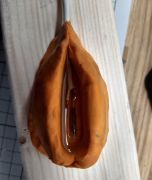|
Yeah I think it's best not to touch the working parts of the system. The spark advance system is the main and only computer in the car and it turns the relay on so that's where I got that. You are correct though that C80 and C27 are not directly connected and one likely triggers the other. Why couldn't Chrysler make this easy?
|
|
|
|

|
| # ? May 22, 2024 05:43 |
|
I've learned the hard way cars from The Good Old DaysTM that don't have any of that awful, complicated computer stuff are actually way more complicated to work on. A buddy got me to help with his 70s Yamaha and it was a nightmare. Mercury switches, timers, lights that had to blink while while also acting as the DRLs sometimes. You're right in your approach I think. Don't touch anything even adjacent to the spark control computer.
|
|
|
|
EightBit posted:You might not get all the sludge up like that. Draining by pulling the plug tends to flush the pan pretty thoroughly. Autoexec.bat posted:It depends, if your engine sludges at all or otherwise has crud in the pan the pump will likely not get it out as well as the traditional method since you don't have the mass of oil pushing it out. Plus you won't know if any metal shavings are on the plug magnet. If your car(s) are not ancient like mine I can't see it hurting anything. I don't think there was any sludge the last time I changed the oil. Idk if I'd call my car "ancient" but it is 16 years old. Mileage is pretty low for it's age at around 166000 KM. (about 100k mi) I intend to use an engine flush before changing the oil because it was on sale and why not. Hopefully this will take care of any sludge buildup and dissolve it into the oil so the pump can get it. The flush is liqui-moly brand if anyone was wondering.
|
|
|
|
Does anyone know how to tell which 2003-2008 Honda Odyssey models are the 5 speed auto with 4WD and which are just the CVT/2WD without climbing under them? Is there an emblem or model designation? A button on the dash? I cannot tell this female friend who is shopping to climb under and look for a rear diff or half shafts.
|
|
|
|
Thanks to you both.
|
|
|
|
B4Ctom1 posted:Does anyone know how to tell which 2003-2008 Honda Odyssey models are the 5 speed auto with 4WD and which are just the CVT/2WD without climbing under them? Is there an emblem or model designation? A button on the dash? I cannot tell this female friend who is shopping to climb under and look for a rear diff or half shafts. I was a bit confused by this question since US Odysseys are basically a different vehicle than the international variants. Here 2003-2008 covers 2 different body styles which all have 5 speeds and I believe are all 2wd. I think you'll need to let us know what country you're in. Autoexec.bat fucked around with this message at 19:03 on Mar 10, 2018 |
|
|
|
Autoexec.bat posted:I was a bit confused by this question since US Odysseys are basically a different vehicle than the international variants. Here 2003-2008 covers 2 different body styles which all have 5 speeds and I believe are all 2wd. I think you'll need to let us know what country you're in. This is very valuable information to me. I am in the USA. I was just worried and trying to avoid her getting a CVT model. And I was misinformed on the all-wheel-drive thing. Are there any CVT modelís in that era?
|
|
|
|
I don't think the Odyssey ever came with a CVT in the US, and a quick google confirms that. Apparently the JDM/AUS etc ones had CVTs and 4wd, but neither are on US market units. I did find a couple private sellers on autotrader claiming to have a "4wd - front" version but 3 in the entire country means it's likely a mistake.
|
|
|
B4Ctom1 posted:This is very valuable information to me. I am in the USA. I was just worried and trying to avoid her getting a CVT model. And I was misinformed on the all-wheel-drive thing. Are there any CVT modelís in that era? I think the CVT was limited to the Civic in that year range. The CVT in those Civics was allegedly quite bad though I have a 1998 still happily running on its first CVT, albeit with a noisy juddering start clutch, that has been that way since I bought it in 2005. You definitely can't count on them having been fed the right fluid though, I wouldn't buy one again just because of that.
|
|
|
|
Breakfast Feud posted:I've learned the hard way cars from The Good Old DaysTM that don't have any of that awful, complicated computer stuff are actually way more complicated to work on. They wouldn't be so bad if they had schematics along with the wiring diagrams, and used any kind of standard parts instead of custom built monstrosities.
|
|
|
|
Autoexec.bat posted:I did some more exploring into my fan not shutting off issue and traced it down to a part called an After-Run Relay which turns out has also been part of my problem with the fan occasionally not working. Problem is the part was only used for one year and is virtually non-existent. The part only pulled up one google result by name and less than a dozen by part number. My question is is there a way to put a regular relay in it's place and disable the timing function? The one I have has a small circuit board in it on top of a traditional relay (which looked pretty well burned out). Here's a picture of the diagram. Is that ambient switch there to keep the timer from "timing out" if the engine bay is too hot? I see you are missing it but the blue wire is connected to "something". You might try seeing what the timer does with that blue J21 wire completely disconnected if it is wired to a hot that may be stopping the timer from timing? Where is J20 on the other side of that *supposed* to go?
|
|
|
|
|
I ended up tracing the blue wire, it is disconnected so no power is on it. I was wrong earlier.
|
|
|
|
Autoexec.bat posted:I don't think the Odyssey ever came with a CVT in the US, and a quick google confirms that. Apparently the JDM/AUS etc ones had CVTs and 4wd, but neither are on US market units. I did find a couple private sellers on autotrader claiming to have a "4wd - front" version but 3 in the entire country means it's likely a mistake. shovelbum posted:I think the CVT was limited to the Civic in that year range. The CVT in those Civics was allegedly quite bad though I have a 1998 still happily running on its first CVT, albeit with a noisy juddering start clutch, that has been that way since I bought it in 2005. You definitely can't count on them having been fed the right fluid though, I wouldn't buy one again just because of that. Thanks guys
|
|
|
Autoexec.bat posted:I ended up tracing the blue wire, it is disconnected so no power is on it. I was wrong earlier. Lol trying to figure this thing out is killing me, if you yank it can you please dissect it for our education?
|
|
|
|
|
I bought a 1982 Mercedes 300d for $500. Changed the battery and starts like new. Brake reservoir is low so going to probably get a bleeder and change the fluid, pads, and shocks at once. Got 4 new tires coming. What else should i check besides basic fluid changes? Should i attempt the front and rear windshield gaskets? They're quite rotted but don't have a welder to repair rust i may find.
|
|
|
|
Christobevii3 posted:I bought a 1982 Mercedes 300d for $500. Changed the battery and starts like new. Brake reservoir is low so going to probably get a bleeder and change the fluid, pads, and shocks at once. Got 4 new tires coming. Other rubber stuff like hoses and belts.
|
|
|
|
79 datsun 280zx. Pulled it out of a field for 200 bucks, replaced the fuel pump and it ran pretty good. Ran it briefly one day, the second day I let it idle for about 20 min. Satisfied I ordered some rims and a few other things figuring it was good to go. On the 3rd day I went to start it and heard a godawful racket from the motor. Stopped trying to turn it over. Drank some beers, scratched my head and attempted to start it again. I ran it for maybe a minute, horrible sounds and running very rough. Turned it off Removed the valve cover, discovered the #4 exhaust valve is stuck open. So the horrible noise is probably the piston nailing a bent over valve. If I have to completely rebuild the motor I'll probably just cut my losses and sell the thing. Can I get away with pulling the head, fixing the valve, and casually ignoring the piston damage? Or would that be a waste of time (I never intended to restore the car, was going to just have fun with it and treat it like a 200 dollar car) Willfrey fucked around with this message at 01:34 on Mar 11, 2018 |
|
|
|
shovelbum posted:Lol trying to figure this thing out is killing me, if you yank it can you please dissect it for our education? The J20 wire when present connects to a junction with the same wire as the electronic choke heater which is triggered by a relay that only powers J20 when the car is on. When powered I believe it detects when the engine bay is getting too hot then triggering the cooling fans, my 1989 golf has a similar sensor but that one just grounds to the block when it gets hot. Since there is some interest, here are the missing pages 5 and 9 that the circuit refers to.  Link  Link Edit: almost forgot to mention, I put a new generic relay in the place of the original and it works great, fan now waits for it to get to temp to turn on and shuts off with the car, I will redo the wiring later with less structural electrical tape but for now I'm glad it works. Autoexec.bat fucked around with this message at 01:52 on Mar 11, 2018 |
|
|
|
Christobevii3 posted:I bought a 1982 Mercedes 300d for $500. Changed the battery and starts like new. Brake reservoir is low so going to probably get a bleeder and change the fluid, pads, and shocks at once. Got 4 new tires coming. Pray to the lord of vacuum lines because you will need his blessing. I think those even used vacuum lines to control the HVAC and central locks if it is what I think it is. Also make sure your brake hoses haven't constricted closed, it's old enough for that to be a problem. Other things to check on a car that old include: ball joints and other steering bits, hazards and other lights incl reverse, cooling fan  , timing belt if it has one (water pump and thermostat too if it is bad), fuses as some POs don't put the right ones in, and finally plugs and wires esp since the wires are prob worse than they appear. , timing belt if it has one (water pump and thermostat too if it is bad), fuses as some POs don't put the right ones in, and finally plugs and wires esp since the wires are prob worse than they appear.I would have someone else do the windshield gaskets, they are not fun on any car and if they are leaking look under the carpet for rust. If it is really rusty under the old seal it is either $$$ or lots of bondo and silicon to try and seal it. Autoexec.bat fucked around with this message at 02:04 on Mar 11, 2018 |
|
|
|
Autoexec.bat posted:Pray to the lord of vacuum lines because you will need his blessing. I think those even used vacuum lines to control the HVAC and central locks if it is what I think it is. Also make sure your brake hoses haven't constricted closed, it's old enough for that to be a problem. Other things to check on a car that old include: ball joints and other steering bits, hazards and other lights incl reverse, cooling fan The ball joints look to all be rust free and done recently. The car was in florida and garage kept until okc and garage kept so hoping to not be rusty. I can keep it in the garage until I get it done so I ordered the gaskets to look at it. If not I'll debate buying a welder and paying someone doing it. The brakes are bad so going to bleed, look for leaks, and change the pads. What happens if they are constricted? Just replace from steel lines to caliper then? I think the a/c is shot but will have to look at it more. This is just a bs side care that may work for brother in law driving to work until he can save for something.
|
|
|
|
Ah fair enough, about the brake hoses I only mean the rubber part that goes from the metal line to the caliper. Basically they swell internally and pinch off the fluid flow. The end result is pressure doesn't get to the calipers and one or more ends up not working as a result. Metal lines don't usually need replacing unless they are rusty. If you can bleed the caliper easily then the hose is likely fine assuming no cracks in the rubber.
Autoexec.bat fucked around with this message at 04:00 on Mar 11, 2018 |
|
|
|
Willfrey posted:79 datsun 280zx. Pulled it out of a field for 200 bucks, replaced the fuel pump and it ran pretty good. Ran it briefly one day, the second day I let it idle for about 20 min. Satisfied I ordered some rims and a few other things figuring it was good to go. Since you're saying $200 car, and don't want to drop much money on it.. Use a borescope (they're cheap at Harbor Freight, like $20 cheap) to see how bad the piston damage is before you spend the time to yank it apart. If it's just an impression on the piston, and the valve didn't break off... gently caress it, it's a $200 car, do what it takes to get a new valve in. It might blow up, it might not. But it's a $200 car. Someone will buy the rolling shell off of you for more than that so long as it's not completely rotted out.
|
|
|
|
I've been having a nightmare with the Durango battery, and it continues today. Old battery died, bought a new one. Alternator died, bought a new one. Drove just fine for a week since alternator install. Today I wake up to go to work and its dead. I drove it and then parked last night with no problems at all. I put the battery starter charger on it at the 12amp charge setting. I left the battery starter charger on the battery for 30 minutes. Went back out to start the car, and it's only clicking, but not turning over. Dash lights, interior lights, etc. all turn on when I'm trying to click it over to start. But the radio display does not - kind of weird. My guess is there is a chance I left an interior light on overnight, or possibly the Auto headlights. But I'm not really sure. I didn't notice anything when I tried to start and leave this morning, because I didn't know it was dead. I then tried putting on a newer, different mobile battery jumper/charger. This one shows me that the battery is OUT, very low or just totally dead; when I hook it up. I left the newer/diff charger on for a few minutes, then went to crank it up. This time, the car did show more signs of coming back to life, better sounds when trying to start the engine, etc - not just clicking. The new charger is currently on the battery, I'm going to give it a few hours. Was my old school starter/charger with the diff settings - "Coventional low maintenance or Deep cycle maintenance free" with 2amp, 12amp, and 50amp(?) engine start, settings - could I have just had the first charger/starter setup with the wrong settings on? Is that why it didn't charge the battery to even start after an hour? I had it set on 12amp as it was sitting for an hour, with no results.. Dennis McClaren fucked around with this message at 14:58 on Mar 11, 2018 |
|
|
|
You either have a horrible drain, or a bad battery cable. Wiggle the cables on the battery and make sure they don't move at all. The other ends could be messed up too, see if you can follow them. I've seen vehicles with weird lights getting stuck on - like the sun visor, glovebox or trunk lights. Aftermarket stereos and subwoofer amplifiers are also notorious for drains if they're installed improperly. Do you have access to a voltmeter? If you do - check the voltage at the cables on the battery, and then check it with your meter probes on the tops of the posts themselves. If you have around 12v on the posts but not the terminals, then your problem is the terminals. If you have 12v on both, your problem might be either on the other ends of the cables or the starter itself. I know you just replaced the battery and alternator, it's not uncommon for all three to kill each other depending on how weak each was before the craziness started. A 12amp charge for an hour should be able to start almost any car though. I suspect cable or starter problems.
|
|
|
|
It's going to take way more than an hour to charge your battery. After an hour you may have put 12A into the battery, who's total capacity is something like 48A. Maybe if you were trying to start a little Japanese sedan with light oil you'd have some success with an hour of charging, but a Durango? Probably not. It takes a load of amps to make the motor turn and you'd have to be insanely lucky to charge it for an hour and get it to start on the first half-crank. Does you Durango have the external voltage regulator? In Dodges there's a trifecta of parts that get replaced far too often and it's the Battery, Alternator and Voltage Regulator. Make sure you alternator is (still) charging the battery. The Dodge regulators that come built into the alternator are apparently for poo poo and lots of people jump them out and put inline regulators. Even then, it's not uncommon to go through 3 or 4 regulators until you get a "good" one. Don't bother getting the cheaper one at the store either, their failure rate is insane.
|
|
|
|
0toShifty posted:You either have a horrible drain, or a bad battery cable. Wiggle the cables on the battery and make sure they don't move at all. The other ends could be messed up too, see if you can follow them. I'll go get a Voltmeter today and check this out. I have heard of all 3 dying. I know nothing about starter's though, just the basics on batteries and alternators. Breakfast Feud posted:It's going to take way more than an hour to charge your battery. After an hour you may have put 12A into the battery, who's total capacity is something like 48A. Maybe if you were trying to start a little Japanese sedan with light oil you'd have some success with an hour of charging, but a Durango? Probably not. It takes a load of amps to make the motor turn and you'd have to be insanely lucky to charge it for an hour and get it to start on the first half-crank. Update : With the newer battery charger box - it started fine. I only had the newer box on there for about 10 minutes and it started up. The battery DOES still read very low though, so I'm going to leave the charger on for a few hours. I don't know what an external voltage regulator is. I have the 4.8L v8 SLT edition. Will the voltmeter be able to check the alternator? Would a voltmeter be able to check the starter? Or do I need a multimeter to do those?
|
|
|
|
A voltmeter can do most of what you need. A multimeter can also measure current, which could help you track down a drain. These days they're pretty much one-in-the-same. It's hard to get a volt-only meter. Harbor Freight and Sears should have options around $20.
|
|
|
|
I would be very careful mucking around with meters near the starter. The amperage present there is in  DANGER DANGER  levels, don't go poking around with a horror freight meter. There are points before the starter you could check, but so far nothing indicates you are having starter issues. levels, don't go poking around with a horror freight meter. There are points before the starter you could check, but so far nothing indicates you are having starter issues. Spend a little bit extra and get something with a digital readout and auto-ranging to save yourself some frustration. Also, apparently your Durango has all the voltage stuff done by the PCM so don't worry about the regulator.
|
|
|
|
I currently have it back on the older battery charger with a 2amp charge. I read that this is apparently the safer way to charge an almost completely dead battery. I'll pick a multimeter up today and do my best trying to find a leak. I'm seriously hoping that it was just an issue of me leaving a dome light on, or auto headlights, or some interior light on overnight.. I will do my best to avoid killing myself when I check anywhere near the starter, thanks. Is it just pulling and checking fuses/relays with the Multi, or are there other points in the engine or in the car I will have to check? I've never had to look for a drain before. I'm hoping this is something I can do while I'm waiting for it to fully charge. I guess this works out good for my dog who gets to walk to Auto-Zone with me to pick up a new Multi! Dennis McClaren fucked around with this message at 16:39 on Mar 11, 2018 |
|
|
|
Breakfast Feud posted:I would be very careful mucking around with meters near the starter. The amperage present there is in
|
|
|
|
With harbor freight meters the probes are not rated for what they say they are. The fuse is likely beefier than the few strands of wire in the actual probe, and the rubber is...lacking. It's prone to cracking at the point where the wire goes into the probe. e: the real risk is when you start to try and measure amperage inline, apparently you need some fancy-pants high Amp meter for measuring starter current.
|
|
|
|
I've definitely had the lead wires on a HF meter get uncomfortably hot without the fuse blowing.
|
|
|
|
Breakfast Feud posted:With harbor freight meters the probes are not rated for what they say they are. The fuse is likely beefier than the few strands of wire in the actual probe, and the rubber is...lacking. It's prone to cracking at the point where the wire goes into the probe. That being said, they're adequate for measuring a car battery or alternator voltage.
|
|
|
|
I know the answer is going to be " get new rotors you cheap cocksucker", but I have to ask anyway. I've got a pulsing when I stop. Funny enough, I feel it in the car, not from the brake pedal which is usually where I feel it when the rotors are hosed. The most likely culprit is the front rotors since they've been on the car for a few years, and the rears were replaced this summer. I had the wheels off recently to check/lube the caliper sliders and took a few fractions of a mm off the pads with some sand paper, but since I was trying to do it quick and dirty, I never bothered looking at the rotors. They're likely too thin to be machined and still be within spec, but I was thinking this: Could I take them off and use an angle grinder with a wire wheel attachment to get rid of the high spots? If I've read, and remembered correctly, a lot of times, the pulsing is a result of a thin rear end layer of pad material getting transferred to the rotor surface and sticking to it. Would a wire wheel attachment be able to get rid of the pad material, while not removing any metal from the rotor itself? Eventually, I'd need to replace the rotors anyway, but I'm hoping that this cheapskate idea will work and allow me to wait a bit, like till the summer, while also preserving my front pads, which were replaced in the fall.
|
|
|
|
wesleywillis posted:get new rotors you cheap cocksucker Honestly, you might get it a little smoother, but it's a very tricky thing to do. Fractions of a millimeter high or low is enough to cause pulsation. Plus, even if each face is perfectly flat, if they're not perfectly parallel you'll get thickness variation as the rotor spins just due to the angle between the two; I doubt you've got a calibrated enough eye to avoid that. Really the best thing is to just spend the $50 or whatever on new rotors, then take them to a shop and have them do a skimming cut to ensure the two faces are perfectly flat and parallel.
|
|
|
|
wesleywillis posted:I know the answer is going to be " get new rotors you cheap cocksucker", but I have to ask anyway. You can do the rebedding process to try and remove the deposits. http://www.stoptech.com/technical-support/technical-white-papers/-warped-brake-disc-and-other-myths quote:The procedures are very similar between manufacturers. With respect to the pads, the bonding resins must be burned off relatively slowly to avoid both fade and uneven deposits. The procedure is several stops of increasing severity with a brief cooling period between them. After the last stop, the system should be allowed to cool to ambient temperature. Typically, a series of ten increasingly hard stops from 60mph to 5 mph with normal acceleration in between should get the job done for a high performance street pad. During pad or disc break-in, do not come to a complete stop, so plan where and when you do this procedure with care and concern for yourself and the safety of others. If you come to a complete stop before the break-in process is completed there is the chance for non-uniform pad material transfer or pad imprinting to take place and the results will be what the whole process is trying to avoid. Game over.
|
|
|
|
What is the point of the button that turns the cruise control system on and off? Does the system consume much power? Did it used to? Is it a historical/legacy thing?
|
|
|
|
My best guess is safeguard, so you don't accidentally hit the "resume" button after exiting the highway having previously been set to 60+ MPH, causing the car to accelerate unexpectedly. Or at least to cover the rear end of the manufacturer if someone causes an accident after bumping resume and sues on "if only there was a way to turn cruise control off, this wouldn't have happened!", because I'm sure there are very few people who actually switch the system off when no longer using it.
|
|
|
|
Hi all, I have never posted in this subforum but I read the rules and hopefully it's okay to ask this here. My mom wants to trade her 2013 Hyundai Elantra for my 2009 Subaru Forester. She wants to do it to be nice, because she thinks it'll help me out to give me the newer car. However, my boyfriend thinks the Subaru might actually be worth more. Details: 2013 Hyundai Elantra, silver 98,000 miles No body damage or problems with the car afaik 2009 Subaru Forester XT, white 111,000 miles Dent on left AND right side, minor hail damage Alignment is off, the inside of the front tires wear more quickly and the steering wheel is turned about 20 degrees to the right when the car is straight. Not sure if this is like an actual axle problem or a simple alignment thing, I know NOTHING about cars. Driver window doesn't work. Electrical issue maybe. I thought the Elantra would obviously be a good deal considering my car has body damage and a couple minor (?) issues plus 10K more miles, but my boyfriend says Subaru are worth a lot more than Hyundai. Thank you to anyone who can help me out. Edit: If it's relevant, the miles on the Hyundai are mostly highway miles, whereas I'm a delivery driver so most of the miles on my Subaru come from city driving, starting and stopping, turning the car on and off 35+ times a day, etc. It's been driven hard but has never really had a problem. Wile E. Toyota fucked around with this message at 00:34 on Mar 12, 2018 |
|
|
|

|
| # ? May 22, 2024 05:43 |
|
alnilam posted:What is the point of the button that turns the cruise control system on and off? Does the system consume much power? Did it used to? Is it a historical/legacy thing? Generally, when the speed is set pressing the Off button unsets the speed but leaves the system on. Pressing it twice shuts it off completely. It's better than tapping the brake pedal.
|
|
|
































